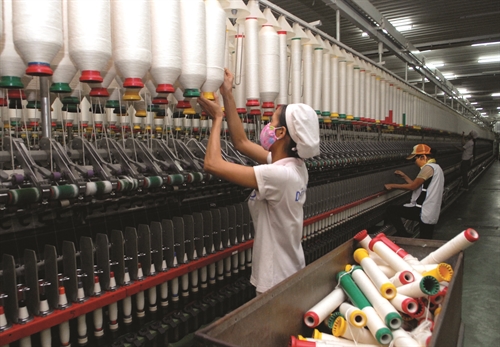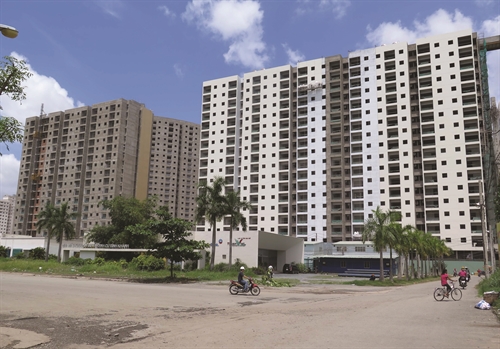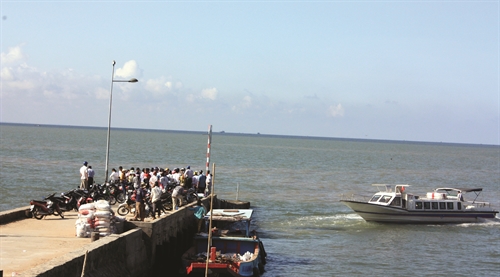Bui Duc Giang[1] and Bui Nguyen Cong[2]
KEY POINTS:
* It would be more difficult for banks to obtain information on the investment project to be financed;
* Banks should be careful when financing projects subject to conditions or where the law requires the projects’ owners to provide their own capital;
* As the law facilitates project transfer, the risk of a project not carried out by the borrower becomes much higher.
Law No. 67/2014/QH13 on Investment, dated November 26, 2014 (the 2014 Law on Investment), became effective on July 1, 2015. This text contains various changes compared to Law No. 59/2005/QH11 on Investment dated November 29, 2005. Some of those changes will directly affect the process of assessing and supervising a borrower's investment projects by banks.
Searching for information on investment projects
Before granting credit, banks will assess the investment project to be financed. Information relating to the investment project may be contained in the Investment Registration Certificate (the IRC) which was called Investment Certificate under the old legal framework.
One of the most significant changes of the 2014 Law on Investment is that investment projects of domestic investors do not need to undergo procedures for issuance of an IRC (Article 36.2(a)). The investors shall only report to the investment registration agency[3] before implementing the investment project (Article 71.5).
Under Article 36.2(b) of the 2014 Law on Investment, projects carried out by certain types of foreign-invested enterprises may also be exempted if they do not fall under one of the following cases: (i) 51% or more of its charter capital is held by a foreign investor(s), or a partnership has a majority of partners being foreign individuals in respect of a partnership; (ii) 51% or more of its charter capital is held by an enterprise prescribed in (i); or (iii) 51% or more of its charter capital is held by a foreign investor(s) and an enterprise prescribed in (i)[4].
Furthermore, in accordance with Article 30 and seq. of the 2014 Law on Investment, certain types of project, whether carried out by foreign investors or domestic investors, must obtain (i) a resolution on investment policy of the National Assembly (nuclear power plants, land use with a requirement for conversion of the land use purpose for wet rice cultivation on two harvests in an area of 500 hectares or more, etc.), (ii) a decision on investment policy of the Prime Minister (construction and commercial operation of golf courses; business of betting and casinos; exploration, production and processing of petroleum, etc), or (iii) a decision on investment policy of the provincial people’s committee (projects to which the State allocates or leases out land without auction, tendering or assignment; projects with a requirement for conversion of the land use purpose implemented outside an industrial zone, export processing zone, hi-tech zone or economic zone or projects using technology on the list of technologies the transfer of which is restricted in accordance with the legislation on technology transfer).
 |
| Producing export yarns at the Ha Nam Textile Company (in Chau Son industrial park) __Photo: Danh Lam/VNA |
It is noteworthy that under Article 31.3 of the 2014 Law on Investment, projects of foreign investors in business of sea shipping, business of telecommunications services with network infrastructure, forestation, publication, press, and establishment of a scientific and technological organization or a scientific and technological enterprise with 100 percent foreign-owned capital are subject to a decision on investment policy of the Prime Minister.
It should be also noted that the IRC merely records information on the investment project[5] and the foreign investor must carry out procedures to obtain the IRC before undertaking procedures to establish an enterprise in order to carry out the investment project (Articles 21.5, 22.4(c) and 23.4(c) of Law No. 68/2014/QH13 on Enterprises dated November 26, 2014[6]).
Funding the investment project
Under Article 39.6 of the 2014 Law on Investment, capital used to carry out an investment project includes “capital contributed by the investor(s) and funding from other sources”. Although the 2014 Law on Investment does not expressly define “funding from other sources”, it can be understood that its means capital mobilized from third parties. It can be credit granted by a credit institution, monies borrowed from shareholders, capital contributed with the view to being distributed residential houses, advances made by purchasers or hire-purchasers of future residential houses, etc.
Although the 2014 Law on Investment does not cap funding raised from other parties or from banks, specialized laws may provide for minimum capital contributed by investors. For instance, under Article 10 of Decree No. 15/2015/ND-CP dated February 14, 2015, on investment in the form of public-private partnership, the investors’ own capital ratio must not be lower than 15 percent of the total investment capital of the project[7].
Article 58.3 of Land Law No. 45/2013/QH13 dated November 29, 2013, provides that any person to whom the State allocates or leases land or whom the State permits to convert land use purpose to implement an investment project must inter alia have the financial capacity to ensure the land use in accordance with the schedule of the investment project. Under Article 14.1 of Decree No. 43/2014/ND-CP providing detailed provisions for implementation of a number of articles of the Land Law dated May 15, 2014 (Decree 43), projects subject to this rule include:
* investment projects for construction of residential houses for sale, for leasing, or for both sale and leasing in accordance with the law on residential housing;
* investment projects for business in real property attached to land use rights in accordance with the law on real property business;
* all other production or business projects not using capital from the State budget.
Article 14.2 of Decree 43 further indicates requirements on financial capacity of the investors to ensure land use according to the schedule of an investment project as follows:
* to have their own capital for project implementation of at least 20 percent of the total investment in the case of projects using under 20 hectares of land; and at least 15 percent of the total investment in case of projects using 20 hectares of land or more;
* to be able to raise funds for project implementation from credit institutions, foreign bank branches and other organizations and individuals.
Similarly, Article 13.2 of Law No. 66/2014/QH13 on real estate business dated November 25, 2014, contains a general provision that the owner of a real estate business shall be responsible for “ensuring financial sources to implement the project in accordance with the approved schedule”. This provision may lead to implementing texts requiring investors to provide their own capital to carry out projects as under the old legal framework.
In those cases, the bank (if it is the unique lender which is financing the project), syndicated lenders (in case several banks are co-financing the project) or banks (when the project owner is raising funds from different banks) may not lend more than the total investment capital minus the minimum own capital to be provided by the investor[8].
Financing projects subject to conditions
The 2014 Law on Investment contains a list of 267 sectors in which investment projects are conditional on the satisfaction of certain conditions provided by law (petroleum, seafood, medicines, accommodations services, etc.).
The 2014 Law on Investment also indicates that relevant conditions applicable to those sectors shall be stipulated in laws, ordinances, decrees and in international treaties of which Vietnam is a contracting party and must be published on the National Enterprise Registration Information Portal.
As such, to assess projects falling under conditional sectors, banks may inspect via the National Enterprise Registration Information Portal. Nevertheless, in order to avoid that information available on that source has not been updated to take account of new legislative changes, banks should review legal texts governing directly the conditional sectors in question.
At this regard, it is noteworthy that this assessment process will more or less create troubles for banks because (i) it is not always easy to locate relevant texts governing a specific conditional sector; and/or (ii) such texts are not always clear, consistent or even intelligible!
Supervising the implementation of the investment project financed by banks
Under the regulations of the State Bank of Vietnam, after disbursing monies to the borrowing company in accordance with the loan agreement, banks are under an obligation to have control over and supervise the process of utilization of those monies by the borrowing company to implement the investment project financed by the loan. The purpose of such action is to examine whether the capital borrower by the project owner (the borrowing company) is used in compliance with the project owner’s undertakings toward the bank to implement the project (which generates cash flows to be used to repay the loan) or not.
Article 71.2(a) of the 2014 Law on Investment prescribes an obligation of the investor and the project enterprise to report to the investment registration agency on the implementation of the investment project, including the results of operation of the project. Article 70.4 of this Law also prescribes that “information about investment projects shall be archived in the national information system on investment and be valid as the original information about such investment projects”.
Nonetheless, it is unclear under the 2014 Law on Investment whether a third party like a bank may have access or not to this trustful source of information stored in this system or at the investment registration agency.
In addition, one of the risks facing lenders in the course of implementation of an investment project is that such investment project is suspended or terminated midway.
At this regard, the 2014 Law on Investment enumerates more circumstances in which an investment project will come to an end, compared to the old legal framework.
For instance, if the State recovers the land used for the investment project, such investment project will automatically terminate; or an investment project may end if the investor had not complied with the provisions of the IRC, had been then subject to an administrative sanction but remained in breach, as a result of which the project has been suspended upon a decision from the investment management state authority without such investor being able to remedy that breach at a late time.
Furthermore, the 2014 Law on Investment allows the borrowing company being the initial project owner to transfer the project to another investor. Particularly, a project can be transferred in part or in whole. From the lenders’ perspective, if the law offers more possibilities for the borrower to transfer its project, the risk of the project not being carried out by the borrower becomes higher. An acceleration clause would be needed to cover this kind of situation.
In light of the above, the 2014 Law on Investment contains various changes which will directly impact assessment and loan management process of banks. Updating those changes in banks’ relevant internal regulations is crucial to prevent non-performing loans from the outset.-
- with respect to the capital portion up to VND 1,500 billion, the equity ratio must be at least 15 percent of such portion;
- with respect to the capital portion above VND 1,500 billion, the equity ratio must be at least 10 percent of such portion.









